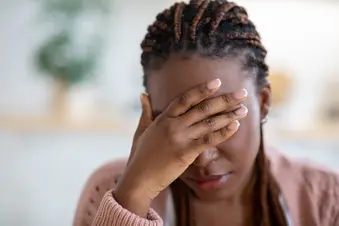
If you have diabetes, it’s key to keep tabs on your blood sugar level. Even if you test often, you should know your body’s warning signs when your blood glucose dips too low – which is hypoglycemia – or shoots up too high into hyperglycemia. These symptoms tell you to act quickly to get your blood glucose up or down to a healthy level again.
Hypoglycemia
What is hypoglycemia?
For people with diabetes, the usual gauge of low blood sugar is lower than 70 milligrams per deciliter (mg/dL). Your warning signs that it’s dipped might not be the same as someone else’s, though. That’s why it’s key to know what your body’s telling you. It helps to jot down your symptoms for future reference, too.
What causes hypoglycemia?
If you have type 1 diabetes or take insulin or other medications for type 2 diabetes, episodes of hypoglycemia can be common. They can be caused by several things, including:
- Taking too much insulin
- Taking the wrong type of insulin
- Injecting insulin into a muscle instead of just under your skin
- Not eating enough carbohydrates
- Intense exercise without adjusting insulin intake
- Not eating enough for the amount of exercise/activity you’re doing
What does hypoglycemia feel like?
While symptoms of low blood sugar can be different for different people, you may feel:
- Tingly, anxious, or sweaty
- Like your heartbeat is out of rhythm
- Edgy or nervous
- Confused or “out of it”
- Dizzy
- Hungry
- Sick to your stomach
- Sleepy
- Drained of energy
- Like your lips, tongue, or cheeks are numb
- Head pain
- Clumsy or awkward
What to do when your blood sugar is too low
If you think your blood sugar’s low, check it. If it’s between 55 and 69 mg/dL, do the 15-15 rule. Take in 15 grams of carbs. This could be a half cup of juice, a tablespoon of sugar or honey, or 3 to 4 glucose tablets. Wait 15 minutes, then check your levels again. Repeat these steps until your blood sugar reaches a healthy range. Once you’re in the clear, eat a healthy meal.
A number below 55 flags a medical emergency. Your best response is to have a glucagon injection. If your symptoms are severe, you might need help from someone who’s trained to give it. Then have them call your doctor immediately.
Hyperglycemia
What is hyperglycemia?
It means your blood sugar is too high. Your body doesn’t have enough insulin to keep your blood sugar in check or doesn’t use the insulin it has well enough. It’s usually measured as anything above 180 to 200 mg/dL.
What causes hyperglycemia?
Some of the common causes of high blood glucose levels include:
- Not following your diabetes eating plan
- Not being physically active
- Not taking enough insulin or diabetes medication
- Not taking diabetes medications correctly
- Illness or infection
- Stress
- Certain medications, including steroids
What does hyperglycemia feel like?
Like hypoglycemia, the signs of high blood sugar can be different for different people. But you’re likely to feel:
- More thirsty than usual
- Like you need to pee more often
- Tired
- Head pain
If your blood sugar has been too high for too long, more serious side effects and feelings can start. Your breath may have a fruity taste. This means ketones, or toxic acids, have built up in your urine and blood. Your mouth may be dry. You may also feel:
- Sick to your stomach
- Weak
- Confused
- Belly pain
- Like you can’t catch your breath
What to do when your blood sugar is too high
Getting some exercise, such as a walk at a moderate pace, can help bring your blood glucose levels back to a normal range. It’s key to test your blood sugar first, though. If it’s above 240 mg/dL, check your ketone level. If you have ketones, don’t exercise. It can make your blood sugar shoot up even higher.
If you feel the more serious side effects, you could be in a state called diabetic ketoacidosis, or close to it. This condition can be fatal. Test your urine for ketones. If the test shows them at any level, you’ll need to go to the hospital for treatment.
Show Sources
Photo Credit: Prostock-Studio / Getty Images
SOURCES:
National Institute of Diabetes and Digestive and Kidney Diseases: “Low Blood Glucose (Hypoglycemia).”
American Diabetes Association: “Hypoglycemia (Low Blood Glucose),” “Hyperglycemia (High Blood Glucose).”
CDC: “How To Treat Low Blood Sugar (Hypoglycemia),” “Manage Blood Sugar.”
Mayo Clinic: “Hyperglycemia in Diabetes.”
Scandinavian Journal of Primary Health Care: “Walking for exercise - immediate effect on blood glucose levels in type 2 diabetes.”